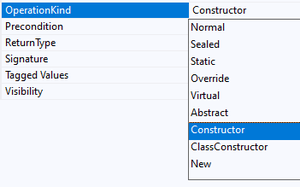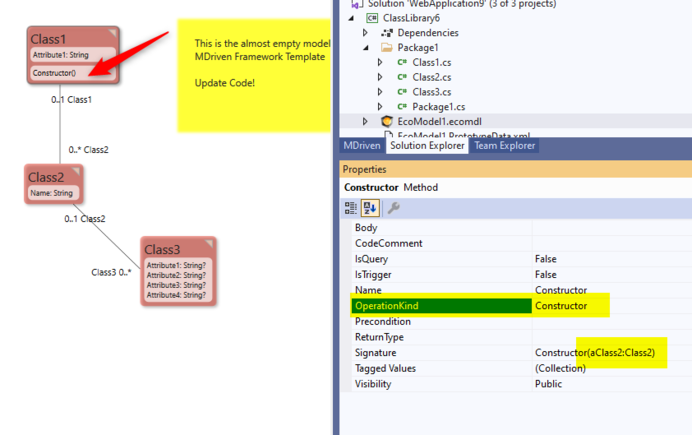Constructor in generated code
No edit summary |
No edit summary |
||
| Line 1: | Line 1: | ||
There are different kinds of operation methods: | |||
[[File:2021-10-14 18h31 05.png|none|thumb]] | [[File:2021-10-14 18h31 05.png|none|thumb]] | ||
[[File:2021-10-14 18h27 52.png|none|thumb|692x692px]] | [[File:2021-10-14 18h27 52.png|none|thumb|692x692px]] | ||
To create a constructor, first, add a normal method, then change the operationKind to constructor. | To create a constructor, first, add a normal method, then change the <code>operationKind</code> to constructor. | ||
In generated code you will get this: | In generated code, you will get this: | ||
public partial class Class1 | public partial class Class1 | ||
{ | { | ||
Revision as of 07:18, 14 June 2023
This page was created by Hans.karlsen on 2021-10-14. Last edited by Stephanie on 2025-04-23.
There are different kinds of operation methods:
To create a constructor, first, add a normal method, then change the operationKind to constructor.
In generated code, you will get this:
public partial class Class1
{
[UmlElement(Id = "c8111515-b7a5-4b9b-87f9-4a19261c8bd8")]
public Class1(Class2 aClass2)
{
}
}
Normally, when doing a constructor for "live" objects, you will want to send in IEcoServiceProvider and call the main constructor we provide like this:
public Class1(IEcoServiceProvider serviceProvider, Class2 aClass2): this(serviceProvider)
{
}


